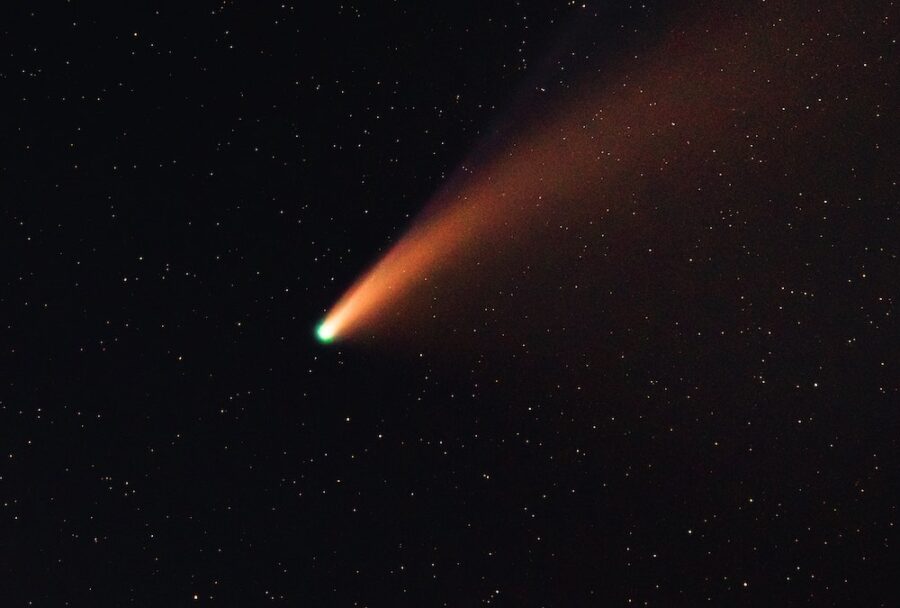Comet On The Way To Earth Last Seen By Cavemen
The comet C/2022 E3 (ZTF) will pass through our solar system in January after last being visible from Earth 50,000 years ago.

A comet that orbits the sun once every 50,000 years may be visible to those of us looking up at the sky sometime near the end of January and the beginning of February. The celestial object, which was discovered in March using a wild-field survey camera, is expected to reach its closest point to the sun early next year. According to IFLScience, the last time the comet was visible to the naked eye was when Neanderthals inhabited several regions of the Earth.
The comet known as C/2022 E3 (ZTF) was initially sighted by the Zwicky Transient Facility, an astronomical survey conducted by the Palomar Observatory in California, earlier this year. At this time, the cosmic snowball can’t be seen without the use of a telescope due to the fact that it’s too dim. Nevertheless, even when it’s approximately 26 million miles away, those of us on Earth may be able to spot the celestial object. It will reportedly resemble a “smudge of chalk dust on a chalkboard.”
A comet is a small body in the solar system made up of frozen gases, dust, and rock that orbits the sun. As they approach our star, the fragile constructs are hit with a growing amount of radiation causing them to release gases in a process known as outgassing. During that time, one or more large tails of gas and dust can be produced.
At this time, C/2022 E3 (ZTF) is located at a distance of approximately 117 million miles from Earth. When the comet reaches its closest point to our sun, its location will be the equivalent to more than 109 times the average distance between the Earth and the moon. The fact that we may be able to catch a glimpse of the object from so far away is absolutely incredible.
C/2022 E3 (ZTF) was first believed to be an asteroid before scientists observed its bright green coma and yellow dust tail. It will mark the first comet visible to the naked eye since NEOWISE in July 2020. While that particular comet left a long misty tail, E3 is expected to appear as a grey streak in the night sky.
Fortunately, despite what some motion pictures might lead you to believe, comets have an extremely low chance of causing destruction to our planet. In fact, various studies suggest an impact frequency of one every 50-350 years, for a comet of 0.5-1km in diameter. In other words, the chances of a catastrophic event like those occurring in films like Deep Impact are very slim.
That sci-fi thriller saw a teenage astronomer and his teacher discovering a comet on a collision course with Earth, leaving the human race to prepare for doomsday. Elijah Wood starred in the film in one of his earliest roles, alongside Robert Duvall, Morgan Freeman, James Cromwell, Vanessa Redgrave, and Jon Favreau. Directed by Mimi Leder from a script by Bruce Joel Rubin and Michael Tolkin, Deep Impact was released in 1998.
In the case of C/2022 E3 (ZTF), the comet will safely pass the Earth at a distance of approximately 44 million kilometers. In other words, there’s no need to hunker down in an underground bunker. Instead, grab a pair of binoculars and be ready to catch a glimpse of the once-in-a-lifetime celestial phenomenon.












